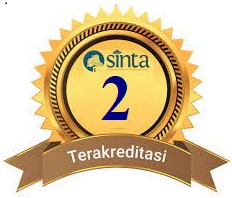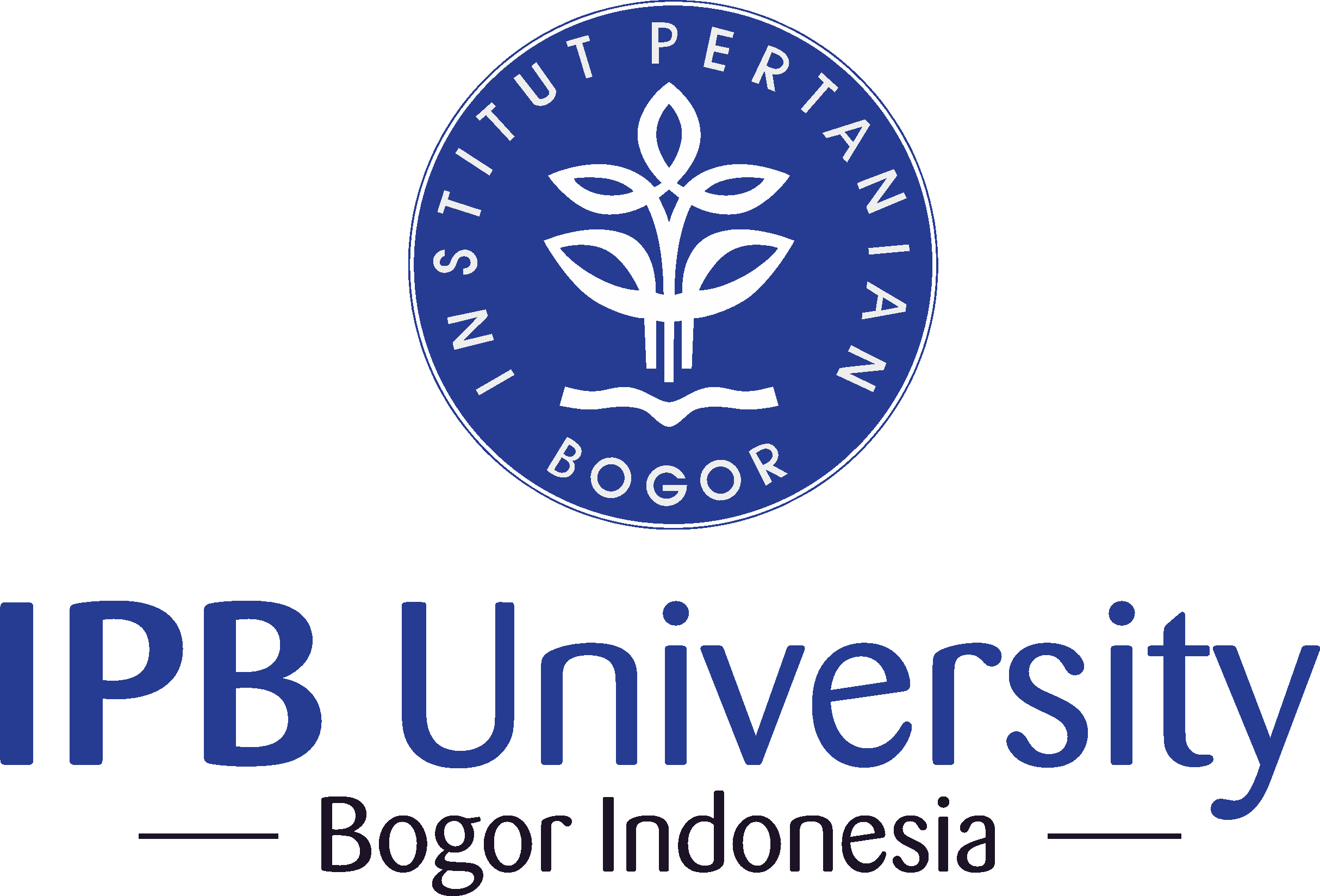Strategi Pengembangan dalam Pemenuhan Konsumsi Pangan Sivitas Yayasan Permaculture
Abstract
Efforts to fulfill food consumption tend to pay little attention to ecosystem sustainability. Permaculture is an agricultural system that designs landscapes resembling natural ecosystems so that they can produce food and prioritize the principle of sustainability. However, as the population increases, permaculture must be reviewed to meet food consumption. This research is a case study in YS Permaculture that implements a permaculture farming system to meet the food consumption needs of the foundation's community. The purpose of the study is to identify the principles of permaculture in the empirical conditions of the foundation and formulate a development strategy to meet the food consumption of the foundation community. This research uses a qualitative descriptive method using an in-depth interview method with foundation management. Based on the identification of 12 permaculture principles, one principle still needs to be implemented optimally, namely, using and respecting renewable resources and their functions. Strategic steps that can be taken to increase the productivity of food commodities and fulfill food consumption are the extensification of permaculture gardens and the implementation of regenerative agriculture that integrates artificial intelligence, machine learning, and precision agriculture. The strategy of fulfilling food consumption for the foundation community through permaculture requires cooperation with various parties, including the government and academics, related to strengthening food security while still paying attention to environmental and social aspects.
Keywords: environmental impact, food productivity, development strategy, permaculture, social impact
Downloads
References
Agustina S. 2020. Eco Camp Educational Tourism in The Cybernetics Era: A Study of Ethnostorytelling Through Bumi Langit Permaculture Instagram Account Imogiri, Bantul, Yogyakarta, Indonesia. In: Proceedings of the Third Workshop on Multidisciplinary and Its Applications. WMA-3, Medan (ID) 1114 December 2019. https:// doi.org/10.4108/eai.11-12-2019.2292245
Ariesa Y, Khairani R, Ekonomi F, Indonesia UP, Pertanian P. 2019. Faktor-Faktor Yang Memengaruhi Ketahanan. 2(1): 818.
Babac S, Belić D. 2018. Permaculture zone planning using the triangular method. Electronic Journal of the Faculty of Civil Engineering Osijek-e-GFOS 9(17): 101110. https://doi.org/10.13167/ 2018.17.10
Bahlai C, Xue Y, McCreary C, Schaafsma A, Hallett R. 2010. Choosing organic pesticides over synthetic pesticides may not effectively mitigate environmental risk in soybeans. PLoS ONE. 5(e11250). https://doi.org/10.1371/journal.pone. 0011250
Conrad A. 2014. We Are Farmers: Agricullture, Food Security, and Adaptive Capcity among Pemaculture and Conventional Farmers in Central Malawi. Proquest. 4(1): 88100.
Dawson TP, Perryman AH, Osborne TM. 2016. Modelling Impacts of Climate Change on Global Food Security. Climatic Change. 134(3): 429440. https://doi.org/10.1007/s10584-014-1277-y
Deviane A, Harcourt W, Hague T. 2019. Permaculture as an Alternative Way of Living: The Example of Bumi Langit in Indonesia. International Institute of Social Studies: Hague, Netherland.
Didarali Z, Gambiza J. 2019. Permaculture: Challenges and benefits in improving rural livelihoods in South Africa and Zimbabwe. Sustainability (Switzerland). 11(8). https://doi.org/10.3390/su11082219
Djausala GP, Sanjayab FJ, Ardeantoc E. 2019. Negara Dan Keanekaragaman Hayati: Menghadapi Tantangan Globalisasi Ekonomi. Prosiding Sem Inar Nasional FISIP Universitas Lam Pung (SeFila) 3 “Agenda Baru Pem Bangunan Indonesia Berbasis Local Knowledge”, Kamis, 8 Agustus 2019, Hotel Bukit Randu, Kota Bandarlampung. Lampung (ID).
Fadholi A, Supriatin D. 2016. Sistem Pola Tanam di Wilayah Priangan Berdasakan Klasifikasi Iklim Oldeman. Jurnal Geografi Gea. 12(2): 56–65. https://doi.org/10.17509/gea.v12i2.1788
FAO. 2018. FAO’s Work on Agroecology. New York (US): FAO Publications Catalogue.
Fauziah N, Lutfia ST, Napisah S. 2016. Alih Fungsi Lahan di Kawasan Serapan Air Puncak Bogor Penyebab Degradasi dan Erosi. Agroteknology: 1–8.
Fawzi NI, Husna VN. 2021. Pemanfaatan Informasi Geospasial untuk Ketahanan Pangan Saat Pandemi Covid-19. Seminar Nasional Geomatika, April, 1. Bogor (ID). https://doi.org/10.24895/ SNG.2020.0-0.1114
Ferguson RS, Lovell ST. 2014. Permaculture for agroecology: Design, movement, practice, and worldview. A review. Agronomy for Sustainable Development. 34(2): 251274. https://doi.org/ 10.1007/s13593-013-0181-6
Ferguson RS, Lovell ST. 2019. Diversification and labor productivity on US permaculture farms. Renewable Agriculture and Food Systems. 34(4): 326337. https://doi.org/10.1017/S1742170517 000497
Ferreira A, Guilherme R, Ferreira C, Oliveira M. 2018. Urban agriculture, a tool towards more resilient urban communities? Current Opinion in Environmental Science&Health. 93–97. https:// doi.org/10.1016/j.coesh.2018.06.004
Flores JJM, Buot IE. 2021. The structure of permaculture landscapes in the Philippines. Biodiversitas 22(4): 20322044. https://doi.org/ 10.13057/biodiv/d220452
Hasegawa T, Fujimori S, Havlík P, Valin H, Bodirsky BL, Doelman JC, Fellmann T, Kyle P, Koopman JFL, Lotze-Campen H, Mason-D’Croz D, Ochi Y, Pérez Domínguez I, Stehfest E, Sulser TB, Tabeau A, Takahashi K, Takakura J, van Meijl H, Witzke P. 2018. Risk of increased food insecurity under stringent global climate change mitigation policy. Nature Climate Change. 8(8): 699–703. https:// doi.org/10.1038/s41558-018-0230-x
Hathaway MD. 2016. Agroecology and permaculture: addressing key ecological problems by rethinking and redesigning agricultural systems. Journal of Environmental Studies and Sciences. 6(2): 239–250. https://doi.org/10.1007/s13412-015-0254-8
Heviyanti M, Syahril M. 2018. Keanekaragaman dan Kelimpahan Serangga Hama dan Predator pada Tanaman Padi (Oryza sativa) di Desa Paya Rahat, Kabupaten Aceh Tamiang. Agrosamudra. 5(2): 31–38.
Holmgren D. 2020. Essence of permaculture. Seymour, VIC, Australia: Melliodora Publishing.Krebs J, & Bach S. 2018. Permaculture-Scientific Evidence of Principles for the Agroecological Design of Farming Systems. Sustainability. 9: 3218. https://doi.org/10.3390/ su10093218
Jensen P. 2013. Permagarden Field Manual: Growing Vegetables and Fruits to Impact Household Nutrition and Economic Strengthening. USAID. https://pdf.usaid.gov/pdf_docs/PA00KWCK.pdf
McLennon E, Dari B, Jha G, Sihi D, Kankarla V. 2021. Regenerative agriculture and integrative permaculture for sustainable and technology driven global food production and security. Agronomy Journal. 113(6): 4541–4559. https://doi.org/ 10.1002/agj2.20814
Mollison B. 2002. Permaculture: A Designer's Manual. 2nd ed. Tasmania (US): Tagari Publications.
Nabilah R, Mugnisjah WQ, Gunawan A. 2018. Permaculture model for fulfilling nutritious food needs students of IPB dormitory. IOP Conference Series: Earth and Environmental Science, Volume 179, 3rd International Symposium for Sustainable Landscape Development (ISSLD 2017) 14–15 November 2017. Bogor (ID). https://doi.org/ 10.1088/1755-1315/179/1/012011
Namululi AM. 2011. The Potential of Permaculture in Addressing Food Insecurity in Karamoja District, Uganda. MSc.
Niesenbaum RA. 2019. The integration of conservation, biodiversity, and sustainability. Sustainability,
Biodiversity, and Conservation. 11(4676): 1–11. https://doi.org/10.3390/su1117 4676
Piratelli A, Pina-Rodrigues FCM, Raedig C. 2019. Integrating Biodiversity Conservation into Agroecosystem Management: Using Birds to Bring Conservation and Agricultural Production Together. Strategies and Tools for a Sustainable Rural Rio de Janeiro. https://doi.org/10.1007/978-3-319-89644-1_10
Putro RH, Miyaura R. 2020. Indonesian permaculture: Factors shaping permaculture farm systems in humid tropical Indonesia. Tropical Agriculture and Development. 64(3): 113–124.
Putryana O, Nugroho PS, Musyawaroh. 2020. Penerapan konsep permaculture pada perancangan Pusat Penelitian dan Pengembangan Pertanian Lahan Kering. Jurnal SENTHONG. 3(2): 357–368.
Rahadian A. 2016. Model Pembinaan UMKM Industri Kreatif: Sebuah Solusi Meningkatkan Daya Saing Global. Prosiding Seminar STIAMI ISSN 2355-2883 Volume III, No. 01, Februari 2016. Prosiding Seminar STIAMI, III(01). http://www.stiami.ac.id/jurnal/download/144/model-pembinaan-umkm-industri-kreatif-sebuah-solusi-meningkatkan-daya-saing-global
Rangkuti F. 2017. Analisis SWOT Teknik Membedah Kasus Bisnis. Jakarta (ID): Gramedia Pustaka Utama.
Riolo F. 2018. The social and environmental value of public urban food forests: The case study of the Picasso Food Forest in Parma, Italy. Urban For Urban Green. 45(126225). https://doi.org/10.1016/ j.ufug.2018.10.002
Smithies O. 2019. A Critical Exploration of Permaculture’s Global Role in Sustainable Development (Issue September). [Thesis] University of Salford.
Stevan H, Ratna A, Mira D. (2019). Agriculture house dengan penekanan permaculture di Pekanbaru. Jurnal Online Mahasiswa (JOM) Bidang Teknik dan Sains. 1(1): 1–15.
Suryana A. 2014. Toward sustainable Indonesian food security 2025: Challenges and its responses. Forum Penelitian Agro Ekonomi. 32(2): 123–135. https://doi.org/10.21082/fae.v32n2.2014.123-135
Ulbrich R, Pahl-Wost C. 2019. The German permaculture community from a community of practice perspective. Sustainability. 11(5): 1241. https://doi.org/10.3390/su11051241
Umiarti AT. 2019. Peranan Ternak dalam Sistem Permakultur. Jakarta (ID): Pustaka Larasan.
Van Der Lugt P, Van Den Dobbelsteen AAJF, Janssen JJA. 2006. An environmental, economic and practical assessment of bamboo as a building material for supporting structures. Constr Build Mater. 20(9): 648–656. https://doi.org/10.1016/ j.conbuildmat.2005.02.023
This journal is published under the terms of the Creative Commons Attribution-NonCommercial 4.0 International License. Authors who publish with this journal agree to the following terms: Authors retain copyright and grant the journal right of first publication with the work simultaneously licensed under a Creative Commons Attribution-NonCommercial 4.0 International License. Attribution — You must give appropriate credit, provide a link to the license, and indicate if changes were made. You may do so in any reasonable manner, but not in any way that suggests the licensor endorses you or your use. NonCommercial — You may not use the material for commercial purposes.






















